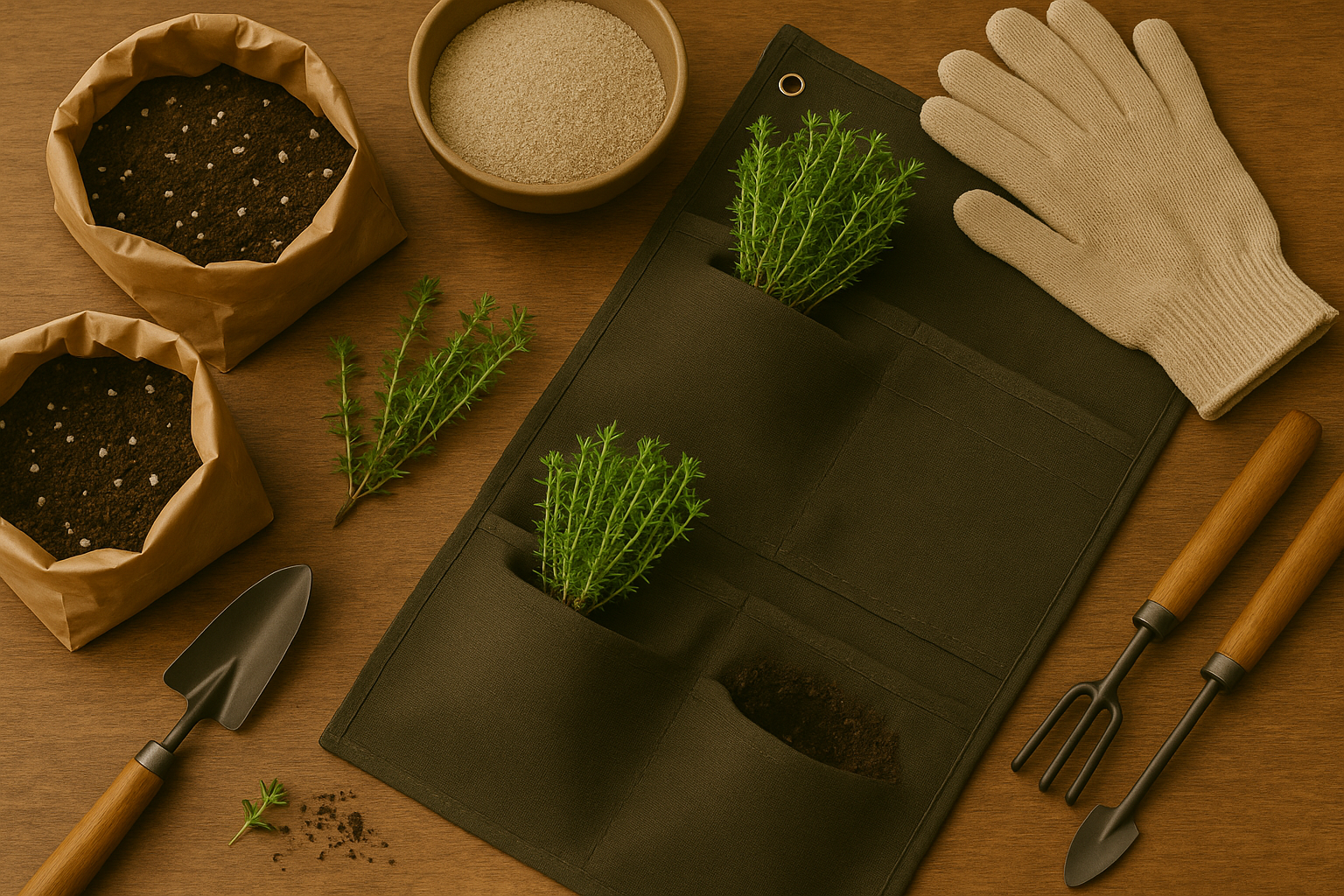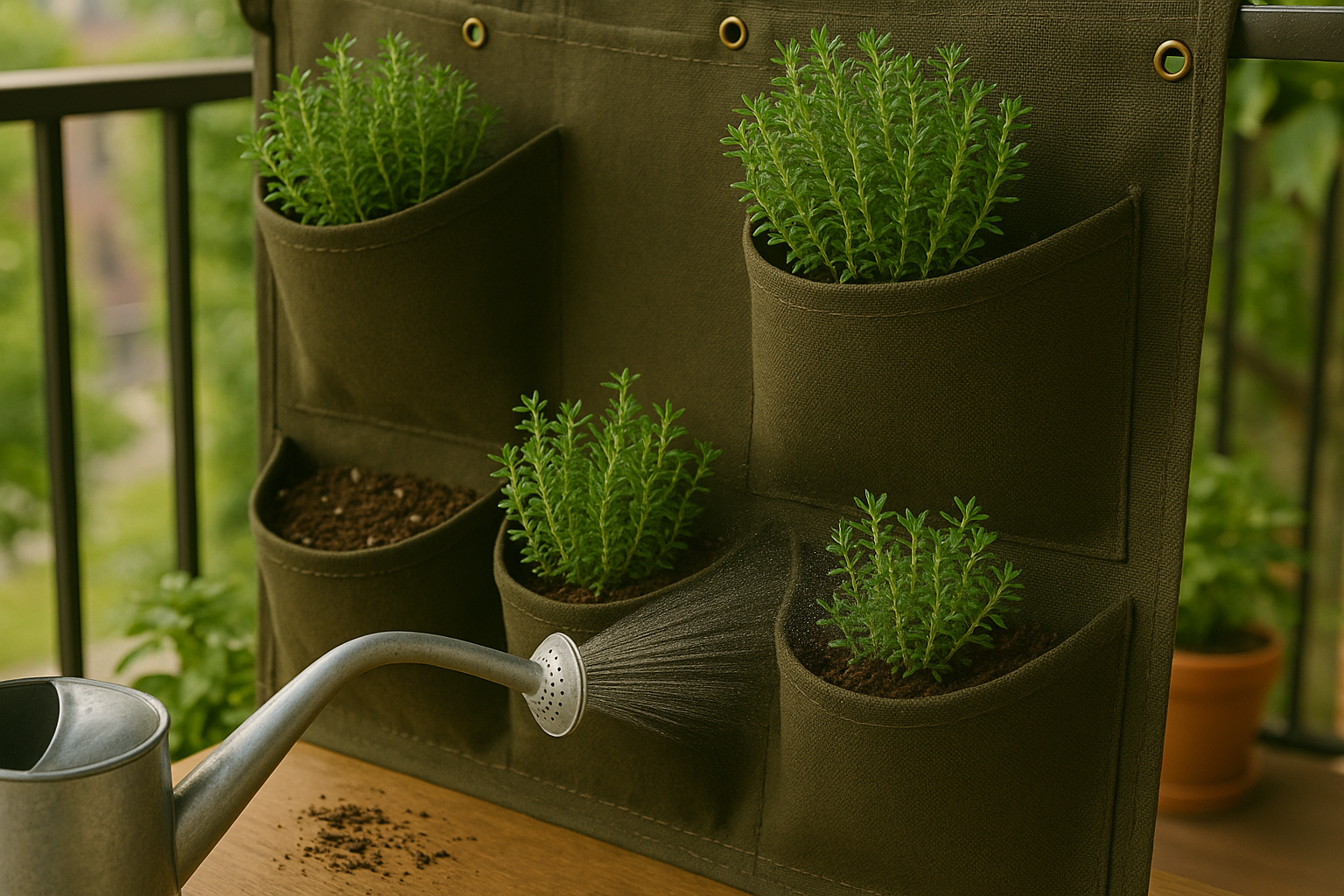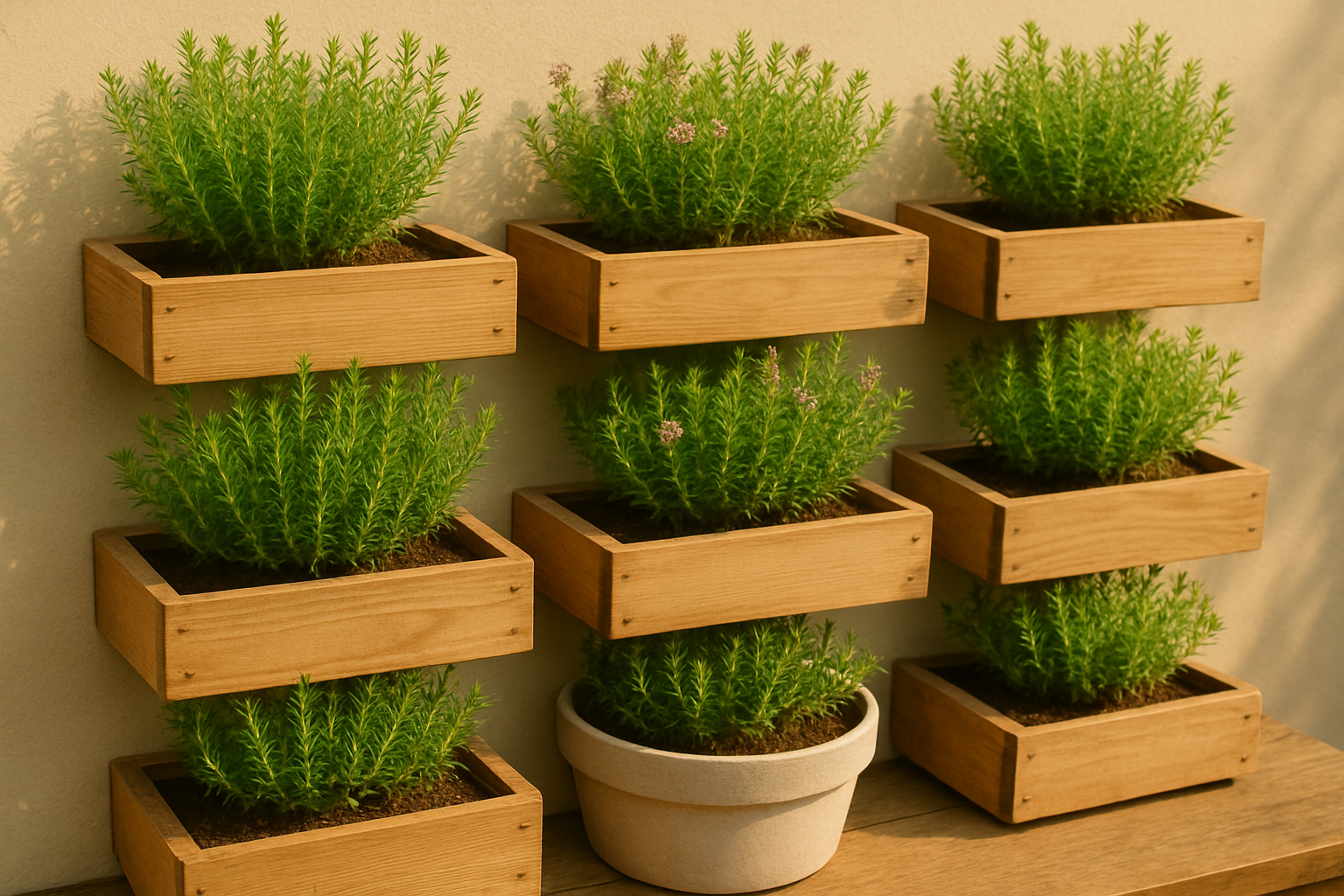Introduction to Growing Thyme Vertically
Thyme vertical growing is quickly becoming a favorite method for gardeners who love fresh herbs but have limited ground space. Thyme, a Mediterranean herb known for its delightful aroma and flavor, can brighten up everything from roasted vegetables to savory breads. Its tiny, robust leaves make it a staple in kitchens around the world, praised not just for taste, but also for its resilience and versatility.
If you wish you could grow more fresh herbs at home but are short on space, vertical gardening is your ticket to success. By training thyme plants to climb or cascade in stacked planters, living walls, or hanging pockets, you can harvest thriving bunches even from a sunny balcony or a compact patio. Plus, thyme thrives in well-drained soil and doesn’t require constant fussing—perfect for busy or beginner gardeners.
In this blog post, we’ll walk you through the essentials of thyme vertical growing: choosing the right varieties, building or buying simple vertical supports, ensuring proper sunlight, and watering just enough to avoid soggy roots. With a few smart moves and a sunny spot, you’ll have a lush, aromatic wall of thyme in no time and elevate your meals (and your mood) with every snip.
Choosing the Right Thyme and Setup for Vertical Gardens
When setting up a vertical garden for thyme, choosing the right variety is key to creating a healthy and productive herb wall. Common thyme (Thymus vulgaris) is a classic choice, prized for its strong flavor and hardy nature—it adapts well to compact spaces. Lemon thyme offers a citrusy twist and grows just as easily in confined spots, making it perfect for snipping fresh leaves as you cook. For an attractive trailing effect, creeping thyme works beautifully; it cascades over the edges of planters and fills gaps with lush foliage.
When it comes to the best vertical garden structures, wall-mounted planters save the most space and allow you to group your herbs exactly where you want them. Stacked pots are versatile and can be rearranged to catch optimal sunlight, while hanging systems work especially well on balconies or patios, letting thyme benefit from good airflow without taking up precious ground space.
No matter which setup you pick, make sure your thyme receives about six hours of sunlight daily—most vertical gardens do best on sunny south-facing walls or fences. Also, space your plants so air can circulate freely, as thyme dislikes humid, stagnant environments. To help your garden thrive, avoid overcrowding and use high-quality potting mix in each container. With the right balance of sun, airflow, and thyme variety, your vertical garden will be a thriving source of fresh flavor all season long.
Soil Preparation and Planting Techniques

Thyme thrives best in well-draining, slightly alkaline soil—think sandy or loamy mixes rather than heavy clay. If you’re planting thyme in a vertical garden or smaller planters, use a high-quality potting mix blended with coarse sand or perlite to improve drainage. To achieve that slightly alkaline pH sweet spot (6.5–7.5), you can mix in a small amount of garden lime.
For step-by-step planting:
- Fill your pocket or planter with the amended soil, leaving about an inch of space at the top.
- If starting from seed, sow thyme seeds on the soil surface and gently press them in—don’t bury them, as thyme seeds need light to germinate.
- Mist the surface to keep it moist, not soggy, and cover with a clear lid if your planter has one to maintain humidity until seedlings appear (usually 2–3 weeks).
- For seedlings, use your finger or a stick to make a shallow hole. Gently separate thyme seedlings, taking care not to disturb tiny roots, and settle each into a hole at the same depth they were growing before.
- Firm the soil gently around the base and water lightly.
- In vertical gardens, space plants a few inches apart for airflow and easier harvesting.
Finally, keep the planter in a sunny spot and water only when the top inch of soil feels dry, as thyme hates wet feet—this careful prep ensures robust, aromatic growth in any compact or vertical space.
Care and Maintenance in a Vertical Garden

Caring for a vertical garden, especially one filled with aromatic thyme, involves a thoughtful but manageable routine. Watering is key—since vertical planters dry out faster than standard pots, check the soil in both the top and bottom pockets daily. Aim to keep the soil lightly moist but not soggy; thyme prefers to dry out a bit between waterings.
Stick your finger about an inch deep—if it feels dry, it’s time to water. However, if the soil clings or feels muddy, hold off to avoid root rot. Overwatered thyme often turns yellow or mushy, while underwatered leaves become brittle and gray.
Fertilizing is best done lightly: use a balanced, water-soluble fertilizer at half strength every four to six weeks during the growing season. Avoid frequent heavy feedings—too much fertilizer can cause leggy, weak growth, especially in confined spaces.
Pruning is essential for encouraging bushy, healthy thyme. Pinch back the tips of stems every few weeks and snip any lanky, upright shoots. This not only shapes your plants beautifully but also boosts flavor and encourages robust regrowth.
Monitor for overcrowding, a common issue in thriving vertical setups. Herbs can outcompete each other and become spindly if cramped. If growth gets dense, carefully thin thyme plants by removing the weakest or most crowded stems, giving the healthiest ones room to spread.
Rotate crops or gently rearrange plant pockets to even out sunlight exposure if you notice patchy or lopsided growth. Consistent, simple checks like these not only keep your vertical garden attractive but also ensure a steady supply of fresh, flavorful thyme right at your fingertips.
Pest, Disease, and Troubleshooting Tips
Thyme grown in vertical gardens can attract a few common problems, including aphids, root rot, and powdery mildew. Aphids are tiny green or black insects that cluster on new growth and suck out plant juices, which stunts thyme’s growth and can cause yellow, curling leaves.
To prevent infestations, check your plants regularly—especially on the undersides of leaves—and wash off aphids with a strong spray of water or use insecticidal soap.
Root rot is another risk, particularly in vertical systems where drainage may be poor. Overwatered thyme can develop soft, brown roots and wilted foliage. To avoid this, ensure your garden has well-draining soil and water only when the top inch of soil is dry.
Powdery mildew shows up as a white, powdery coating on leaves, especially in humid conditions. Improving air circulation by spacing plants apart and pruning back dense growth helps keep mildew at bay.
At the first sign of any issue, remove affected leaves and consider an organic fungicide if mildew spreads. Early detection and quick action stop pests and diseases before they get out of control, helping your thyme thrive in a vertical garden.
Harvesting and Using Fresh Thyme
For the best flavor and continued growth, harvest thyme in the morning after the dew dries but before the sun gets too hot—typically just as the plant begins to flower. This timing helps capture the essential oils that give thyme its signature aroma and taste.
Use clean scissors or garden shears to snip stems, choosing non-woody, green growth and cutting just above a leaf node. This encourages healthy regrowth without stressing the plant. Avoid taking more than one-third of the plant at a time, as this can weaken it.
Fresh thyme leaves can be gently stripped by running your fingers down the stem in the opposite direction of leaf growth. If you have a surplus, drying is simple: tie small bundles and hang them upside down in a dry, shaded place until the leaves crumble easily. Then, store the dried thyme in airtight jars.
For freezing, chop the leaves and place them in ice cube trays with a little water or olive oil for quick additions to soups and sauces.
Fresh thyme is wonderfully versatile:
- Sprinkle it on roasted vegetables or chicken
- Stir it into scrambled eggs
- Pair it with lemon for bright salad dressings and marinades
Because thyme is robust, it holds up well in dishes that simmer or roast for a long time, infusing a subtle earthiness that complements a wide variety of recipes.
Conclusion & Encouragement to Try Vertical Thyme Gardening
Vertical thyme gardening isn’t just simple—it’s a smart way to transform even the smallest spaces into lush, aromatic havens. Whether you have a sunny balcony or a tiny patio, vertical setups save space and make tending your herbs super easy. Thyme is forgiving, thrives in contained environments, and offers fresh flavor at your fingertips year-round.
The satisfaction of watching your greenery climb and thrive is truly rewarding. Plus, the techniques you use for thyme work wonderfully for other herbs like basil, mint, or oregano—so feel free to experiment and mix things up!
Have you tried vertical herb gardening, or are you curious about getting started? Share your tips, questions, or creative setups in the comments. Let’s inspire each other and turn every available wall or railing into a flourishing mini-garden!
